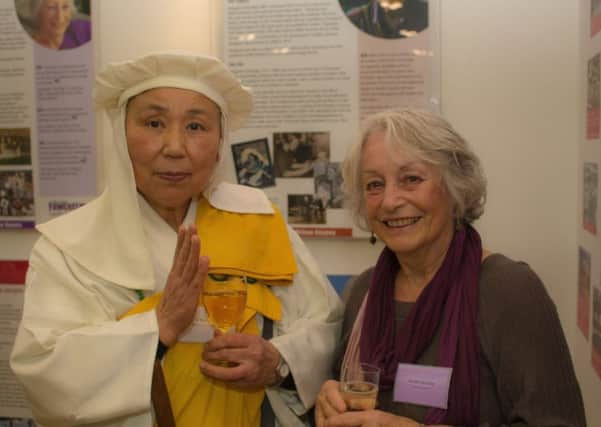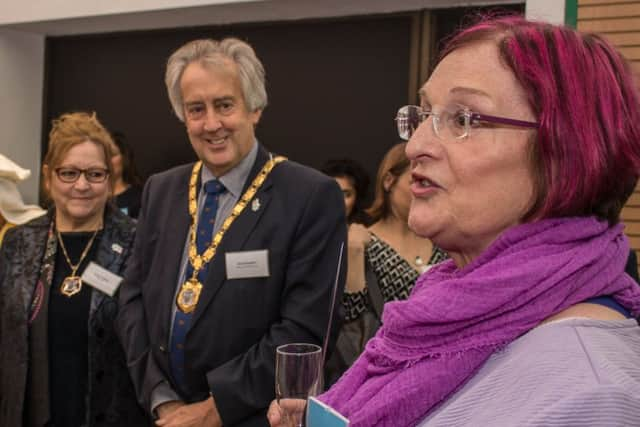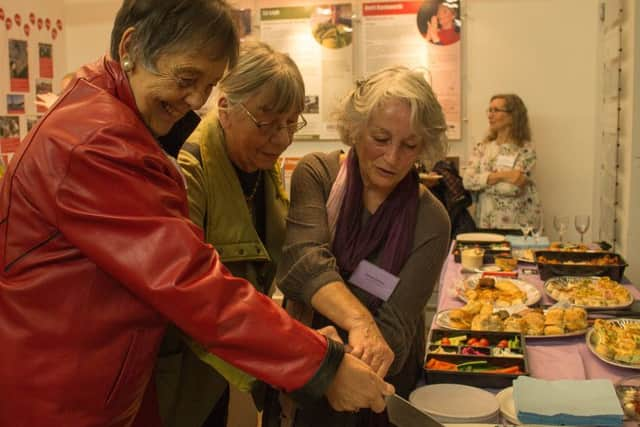Meet the women who made Milton Keynes at exhibition


Conceived and executed by members of the MK Fawcett Society to coincide with the MK50 celebrations, ‘Women Who Made Milton Keynes’ celebrates the lives and legacy of 10 pioneering women who helped create the city’s identity and its landmarks, and it runs until Saturday, December 9.
A packed and lively audience, including MK South MP Iain Stewart, at the exhibition’s launch on November 16 heard the Mayor of Milton Keynes Cllr David Hopkins pay tribute to the women, whose contributions are rarely acknowledged in the histories of Milton Keynes.
Advertisement
Advertisement
From Avril Dankworth who founded the National Youth Music Camps in 1970 at The Stables in Wavendon – an initiative that helped to ‘put Milton Keynes on the map’, to Margaret Durbridge - the only woman invited to join the strategic Planning Board for the new city in 1966 – who promoted the concept of the ‘Redways’. The legacy of these women continues to give the city its special character, said the Mayor.


The five surviving women pioneers were guests of honour at the launch: Teresa Collard, now aged 94, who founded the original MK February Festival of the Arts in the 1970s; artist Liz Leyh who created MK’s famous Concrete Cows; Jane Henshaw whose involvement in countless community developments included the accreditation of Computer Studies in schools; Margaret Sale, a lead player in the saving of Bletchley Park and in the establishment of the National Museum of Computing; and eco-activist Deirdre Battista who worked on the construction of two of MK’s best-known landmarks - the Peace Pagoda and the Medicine Wheel at Willen Lake.
She described the exhibition as “amazing, humbling and great!” – a tribute to all women who give so much to their communities, everywhere.
Gill Kirkup, convenor of the MK Fawcett group said: “We don’t claim that these are the only pioneering women whose impact has been significant in Milton Keynes. But we hope the exhibition will inspire people to think about other women whose contribution is often hidden or unacknowledged”, a point reinforced in remarks by Peter Waterman, formerly of MK Development Corporation, and Hannah O’Neill, Deputy Leader of MK Council.
Advertisement
Advertisement
Sam Smethers, CEO of the Fawcett Society, added: “Who we commemorate says a lot about who and what we value. In 2018, to mark the centenary of women winning the right to vote, a statue of suffragist leader Millicent Fawcett will be unveiled in Parliament Square. It will be the first statue of a woman to stand in this iconic location. Women are still largely invisible from our public spaces. That’s why we need exhibitions like “Women Who Made Milton Keynes” in towns and cities all over the country.”


‘Women Who Made Milton Keynes’ is supported by funding from the Community Foundation, West Bletchley Council, Campbell Park Parish Council, Shenley Brook End and Tattenhoe Parish Council, the Harry Middleton Gift and the Open University. Additional support for the launch came from Morrisons, Waitrose and Tesco.